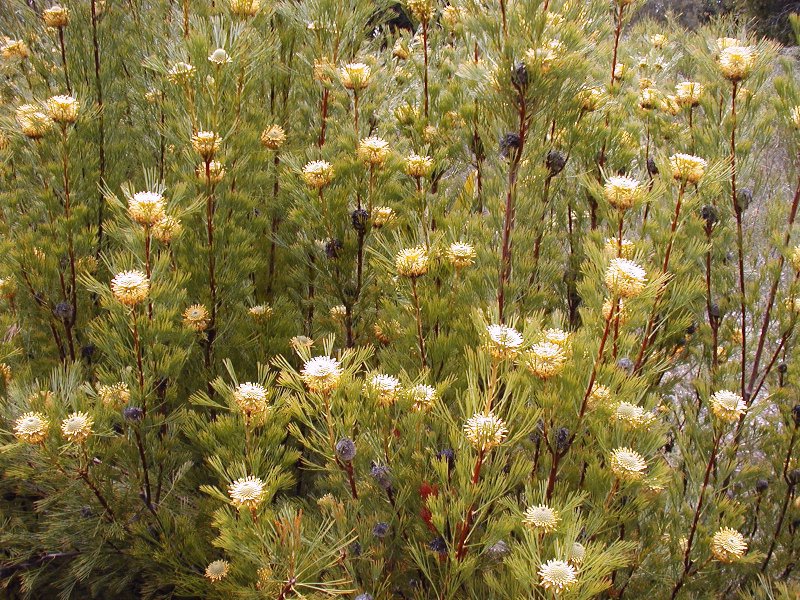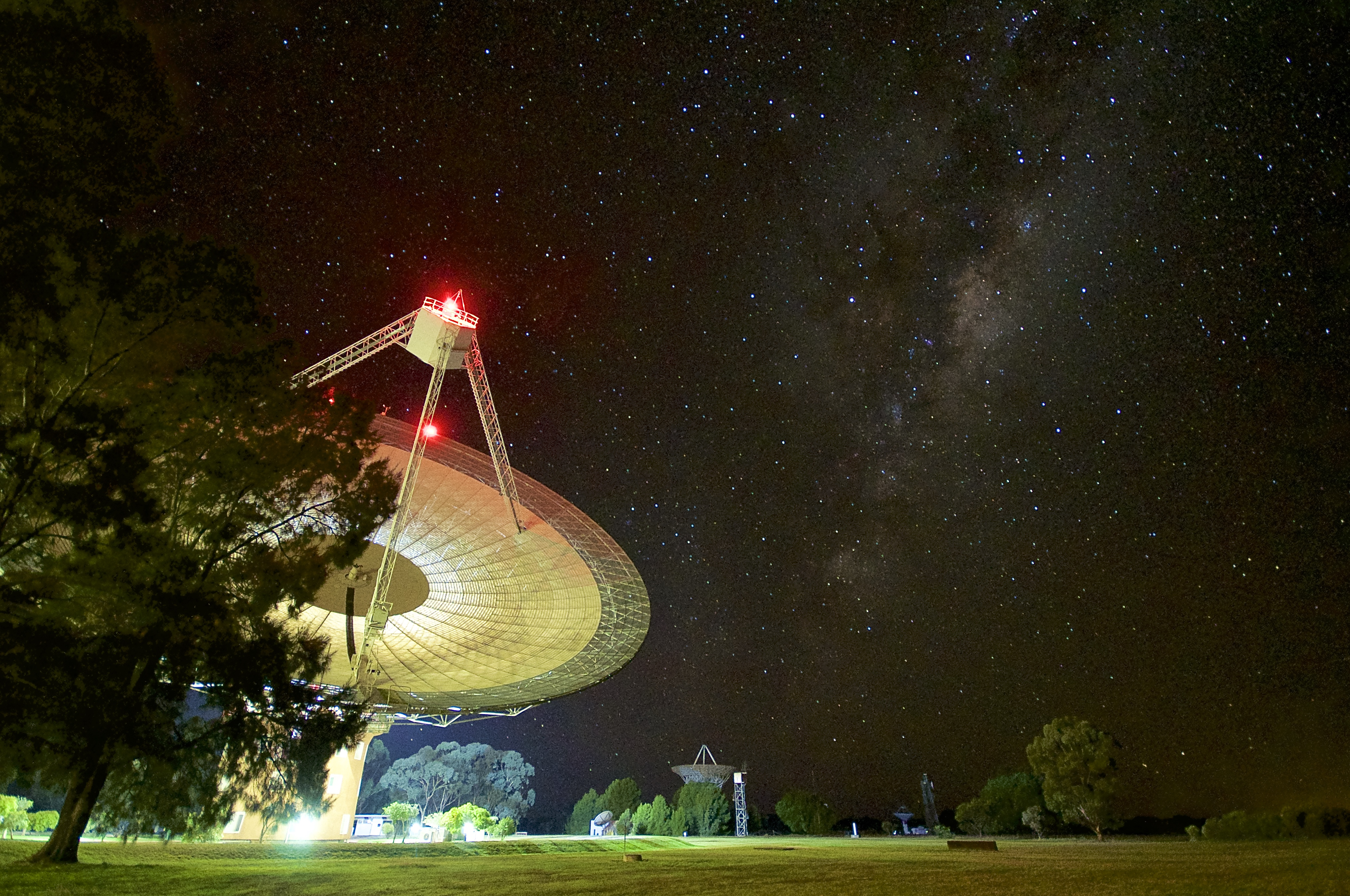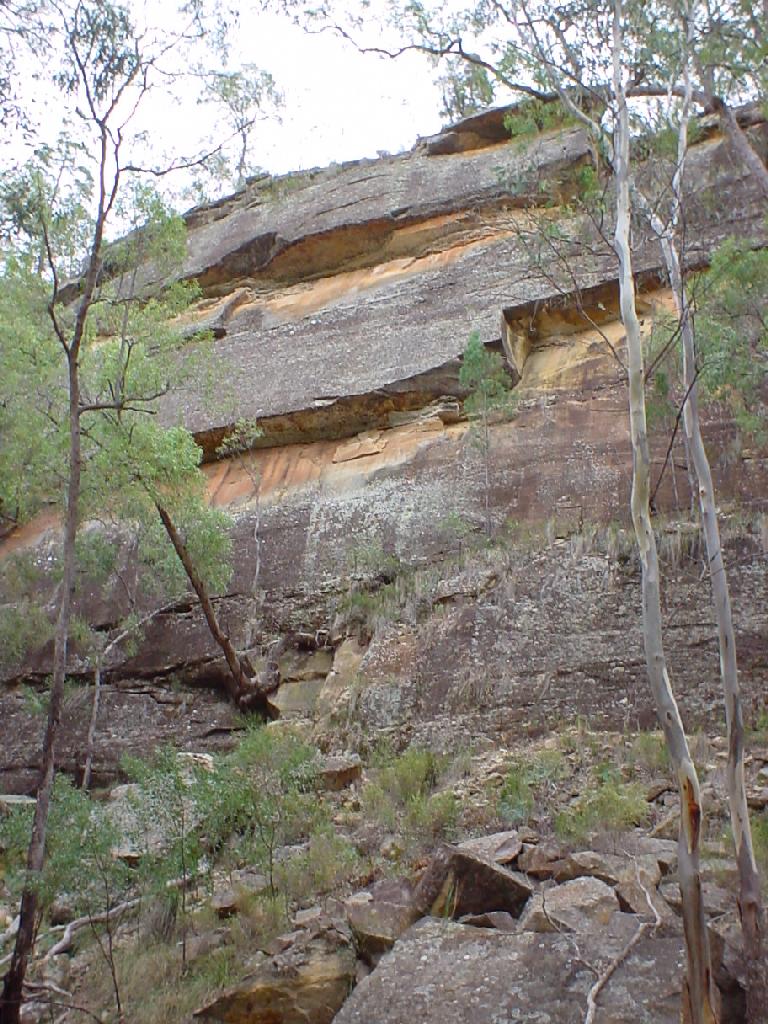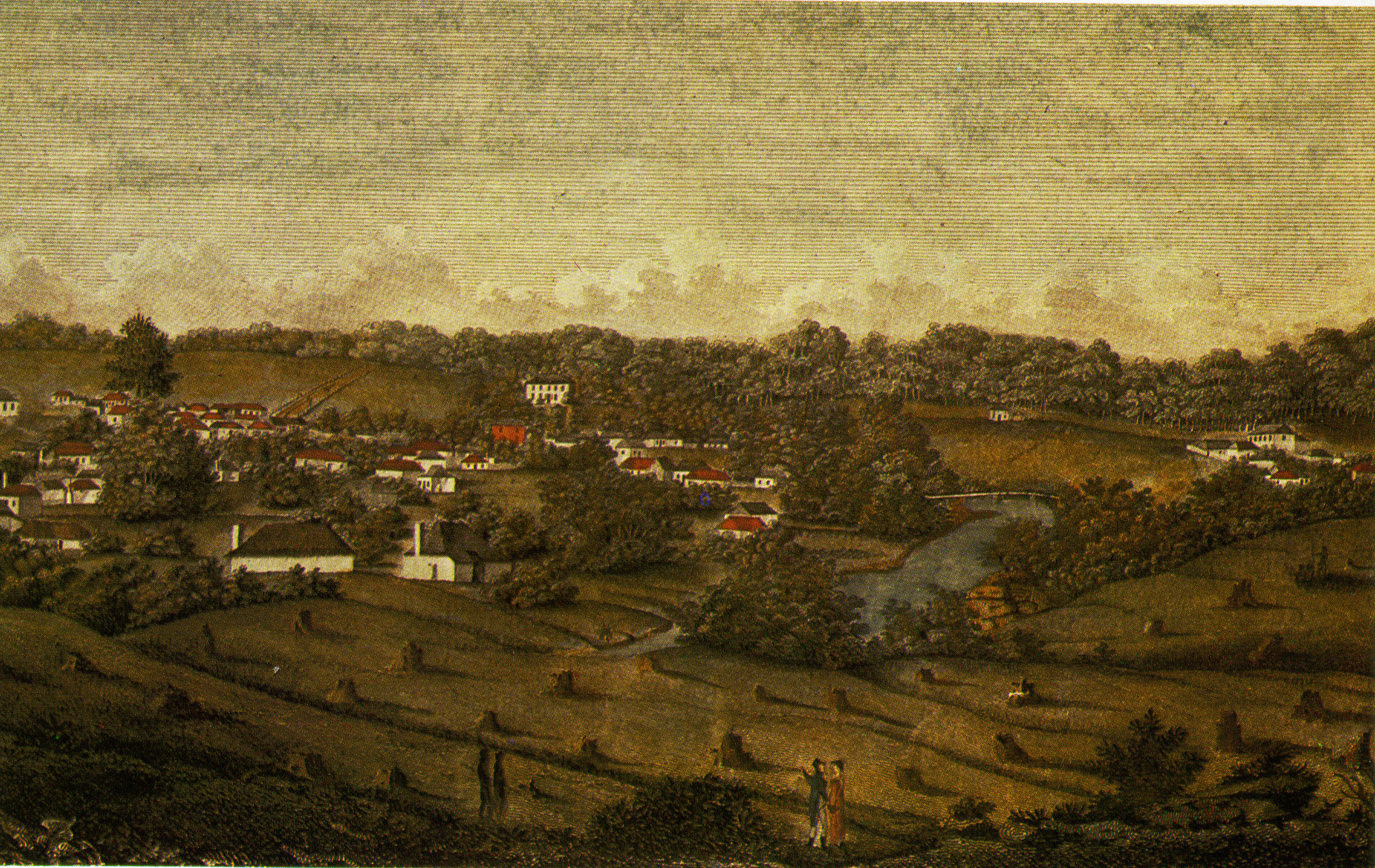|
Isopogon Petiolaris
''Isopogon petiolaris'' is a species of plant in the family Proteaceae and is endemic to eastern Australia. It is a low, spreading shrub with sharply-pointed, divided leaves and more or less spherical heads of yellow flowers. Description ''Isopogon petiolaris'' is a low, spreading shrub that typically grows to a height of less than and has reddish brown branchlets. The leaves are mostly long, pinnately or ternately divided, the undivided part long, the lobes wide and sharply pointed. The flowers are arranged in sessile, more or less spherical heads in diameter, surrounded by leaves with involucral bracts In botany, a bract is a modified or specialized leaf, especially one associated with a reproductive structure such as a flower, inflorescence axis or cone scale. Bracts are usually different from foliage leaves. They may be smaller, larger, ... at the base. The flowers are long, yellow and more or less glabrous. Flowering occurs from July to November and the fr ... [...More Info...] [...Related Items...] OR: [Wikipedia] [Google] [Baidu] |
Australian National Botanic Gardens
The Australian National Botanic Gardens (ANBG) is a heritage-listed botanical garden located in , Canberra, in the Australian Capital Territory, Australia. Established in 1949, the Gardens is administered by the Australian Government's Department of Agriculture, Water and the Environment. The botanic gardens was added to the Commonwealth Heritage List on 22 June 2004. The botanic gardens is the largest living collection of native Australian flora. The mission of the ANBG is to "study and promote Australia's flora". The gardens maintains a wide variety of botanical resources for researchers and cultivates native plants threatened in the wild. The herbarium code for the Australian National Botanic Gardens is ''CANB''. History When Canberra was being planned in the 1930s, the establishment of the gardens was recommended in a report in 1933 by the Advisory Council of Federal Capital Territory. In 1935, The Dickson Report set forth a framework for their development. A large site fo ... [...More Info...] [...Related Items...] OR: [Wikipedia] [Google] [Baidu] |
Supplementum Primum Prodromi Florae Novae Hollandiae
''Supplementum primum Prodromi florae Novae Hollandiae'' ("First supplement to the Prodromus of the flora of New Holland") is an 1830 supplement to Robert Brown's ''Prodromus florae Novae Hollandiae et Insulae Van Diemen''. It may be referred to by its standard botanical abbreviation ''Suppl. Prodr. Fl. Nov. Holl.'' The supplement published numerous new Proteaceae The Proteaceae form a family of flowering plants predominantly distributed in the Southern Hemisphere. The family comprises 83 genera with about 1,660 known species. Together with the Platanaceae and Nelumbonaceae, they make up the order Pro ... taxa, mainly those discovered by William Baxter since the publication of the original ''Prodromus'' in 1810. References External links * 1830 non-fiction books Books about Australian natural history Florae (publication) Botany in Australia 1830 in science Works by Robert Brown (botanist, born 1773) {{Australia-book-stub ... [...More Info...] [...Related Items...] OR: [Wikipedia] [Google] [Baidu] |
Flora Of Queensland
Flora is all the plant life present in a particular region or time, generally the naturally occurring (indigenous) native plants. Sometimes bacteria and fungi are also referred to as flora, as in the terms '' gut flora'' or '' skin flora''. Etymology The word "flora" comes from the Latin name of Flora, the goddess of plants, flowers, and fertility in Roman mythology. The technical term "flora" is then derived from a metonymy of this goddess at the end of the sixteenth century. It was first used in poetry to denote the natural vegetation of an area, but soon also assumed the meaning of a work cataloguing such vegetation. Moreover, "Flora" was used to refer to the flowers of an artificial garden in the seventeenth century. The distinction between vegetation (the general appearance of a community) and flora (the taxonomic composition of a community) was first made by Jules Thurmann (1849). Prior to this, the two terms were used indiscriminately.Thurmann, J. (1849). ''Essai de ... [...More Info...] [...Related Items...] OR: [Wikipedia] [Google] [Baidu] |
Flora Of New South Wales ...
*''The Flora that are native to New South Wales, Australia''. :*''Taxa of the lowest rank are always included. Higher taxa are included only if endemic''. *The categorisation scheme follows the World Geographical Scheme for Recording Plant Distributions, in which :* Jervis Bay Territory, politically a Commonwealth of Australia territory, is treated as part of New South Wales; :* the Australian Capital Territory, politically a Commonwealth of Australia territory, is treated as separate but subordinate to New South Wales; :* Lord Howe Island, politically part of New South Wales, is treated as subordinate to Norfolk Island. {{CatAutoTOC New South Wales Biota of New South Wales New South Wales ) , nickname = , image_map = New South Wales in Australia.svg , map_caption = Location of New South Wales in AustraliaCoordinates: , subdivision_type = Country , subdivision_name = Australia , established_title = Before federation , es ... [...More Info...] [...Related Items...] OR: [Wikipedia] [Google] [Baidu] |
Isopogon
''Isopogon'', commonly known as conesticks, conebushes or coneflowers, is a genus of about forty species of flowering plants in the family Proteaceae, and are endemic to Australia. They are shrubs with rigid leaves, bisexual flowers in a dense spike or "cone" and the fruit is a small, hairy nut. Description Plants in the genus ''Isopogon'' are erect or prostrate shrubs with rigid, usually compound, rarely simple leaves. Compound leaves are deeply divided with flat or cylindrical lobes. The flowers are usually arranged on the ends of branches, usually surrounded by bracts, in a more or less conical or spherical spike. Each flower is bisexual and symmetrical, the tepals spreading as the flower develops, the lower part persisting unit the fruit expands. The fruit are fused to form a woody cone-like to more or less spherical structure, each fruit a nut with bracts that eventually fall and release the fruit. ''Isopogon'' have 13 haploid chromosomes. Taxonomy The genus ''Isopogo ... [...More Info...] [...Related Items...] OR: [Wikipedia] [Google] [Baidu] |
Parkes, New South Wales
Parkes is a town in the Central West region of New South Wales, Australia. It is the main settlement in the local government area of Parkes Shire. Parkes had a population of 11,224 as at 30 June 2018. Estimated resident population, 30 June 2018. Parkes is part of the traditional lands of the Wiradjuri people, the largest language group in NSW with a country of more than 120,000 square kilometres. History The Wiradjuri people have lived on the lands of the 3 rivers, including the Lachlan River, for more than 40,000 years. The town of Parkes was part of the colonial expansion of the early 19th century, originally founded in 1853 as the settlement Currajong, named for the abundance of kurrajong trees in the local area by the settlers, but was then known as Bushman's (from the local mine named Bushman's Lead). In August 1873, Henry Parkes (later Sir Henry) visited the area and in December 1873 the town was officially renamed Parkes in his honour. (Sir Henry Parkes is recogni ... [...More Info...] [...Related Items...] OR: [Wikipedia] [Google] [Baidu] |
Pilliga Forest
The Pilliga Forest, sometimes known as the Pilliga Scrub, constitute over 5,000 km2 of semi-arid woodland in temperate north-central New South Wales, Australia. It is the largest such continuous remnant in the state. The forest is located near the towns of Baradine and Narrabri and the villages of Pilliga and Gwabegar. Most land within the Pilliga is in crown tenure, either as State Forest (2,416 km2), Nature Reserve, State Conservation Area or National Park (2,770 km2). History Author Eric Rolls wrote a historic account of the Pilliga called '' A Million Wild Acres'', which gives an insight into the history of the region. One of Rolls' most-cited conclusions is that the forest used to be an open woodland forest and that European influence has enabled the cypress pine to dominate. However, many scientific authors now disagree with much of Rolls' analysis, quoting historical records from as early as the 1870s which suggest that the plant communities in th ... [...More Info...] [...Related Items...] OR: [Wikipedia] [Google] [Baidu] |
Parramatta
Parramatta () is a suburb and major Central business district, commercial centre in Greater Western Sydney, located in the state of New South Wales, Australia. It is located approximately west of the Sydney central business district on the banks of the Parramatta River. Parramatta is the administrative seat of the Local government areas of New South Wales, local government area of the City of Parramatta and is often regarded as the main business district of Greater Western Sydney. Parramatta also has a long history as a second administrative centre in the Sydney metropolitan region, playing host to a number of state government departments as well as state and federal courts. It is often colloquially referred to as "Parra". Parramatta, founded as a British settlement in 1788, the same year as Sydney, is the oldest inland European settlement in Australia and is the economic centre of Greater Western Sydney. Since 2000, government agencies such as the New South Wales Police Force ... [...More Info...] [...Related Items...] OR: [Wikipedia] [Google] [Baidu] |
Northern Tablelands
The Northern Tablelands, also known as the New England Tableland, is a plateau and a region of the Great Dividing Range in northern New South Wales, Australia. It includes the New England Range, the narrow highlands area of the New England region, stretching from the Moonbi Range in the south to the Queensland border in the north. The region corresponds generally to the Bureau of Meteorology forecast area for the Northern Tablelands which in this case includes Inverell although it is significantly lower in elevation. Geography and climate These tablelands are the largest highland area in Australia, covering approximately 18,197 square kilometres. There are widespread high points over 1,000 metres including The Brothers (1,508m), Ben Lomond (1,505m), Mount Rumbee (1,503m), Point Lookout (1,564m), Campoompeta (1,510m), Mount Spirabo (1,492m), Mount Mitchell (1,475m), Chandler's Peak (1,471m), Mount Grundy (1,462m), Mount Bajimba (1,448 m) and the highest point at Round Mountain i ... [...More Info...] [...Related Items...] OR: [Wikipedia] [Google] [Baidu] |
Darling Downs
The Darling Downs is a farming region on the western slopes of the Great Dividing Range in southern Queensland, Australia. The Downs are to the west of South East Queensland and are one of the major regions of Queensland. The name was generally applied to an area approximating to that of the Condamine River catchment upstream of Condamine township but is now applied to a wider region comprising the Southern Downs, Western Downs, Toowoomba and Goondiwindi local authority areas. The name Darling Downs was given in 1827 by Allan Cunningham, the first European explorer to reach the area and recognises the then Governor of New South Wales, Ralph Darling. The region has developed a strong and diverse agricultural industry largely due to the extensive areas of vertosols (cracking clay soils), particularly black vertosols, of moderate to high fertility and available water capacity. Manufacturing and mining, particularly coal mining are also important, and coal seam gas extraction ... [...More Info...] [...Related Items...] OR: [Wikipedia] [Google] [Baidu] |
Allan Cunningham (botanist)
Allan Cunningham (13 July 1791 – 27 June 1839) was an English botany, botanist and List of explorers, explorer, primarily known for his travels in Australia to collect plants. Early life Cunningham was born in Wimbledon, London, Wimbledon, Surrey, England, the son of Allan Cunningham (head gardener at Wimbledon Park House), who came from Renfrewshire, Scotland, and his English wife Sarah (née Juson/Jewson née Dicken). Allan Cunningham was educated at a Putney private school, Reverend John Adams (educational writer), John Adams Academy and then went into a solicitor's office (a Lincoln's Inn Conveyancer). He afterwards obtained a position with William Townsend Aiton superintendent of Royal Botanic Gardens, Kew, Kew Gardens, and this brought him in touch with Robert Brown (Scottish botanist from Montrose), Robert Brown and Joseph Banks, Sir Joseph Banks. Brazil and Australia (New South Wales) On Banks' recommendation, Cunningham went to Brazil with James Bowie (botani ... [...More Info...] [...Related Items...] OR: [Wikipedia] [Google] [Baidu] |
Moreton Bay
Moreton Bay is a bay located on the eastern coast of Australia from central Brisbane, Queensland. It is one of Queensland's most important coastal resources. The waters of Moreton Bay are a popular destination for recreational anglers and are used by commercial operators who provide seafood to market. The Port of Brisbane coordinates large traffic along the shipping channel which crosses the northern section of the bay. The bay serves as a safe approach to the airport and reduces noise pollution over the city to the west of the runway. A number of barge, ferry and water-taxi services also travel over the bay. Moreton Bay was the site of conflict between the Quandamooka people and early European settlers. It contains environmentally significant habitats and large areas of sandbanks. The bay is the only place in Australia where dugong gather into herds. Many parts of the mainland foreshore and southern islands are settled. The waters of Moreton Bay are relatively calm, being s ... [...More Info...] [...Related Items...] OR: [Wikipedia] [Google] [Baidu] |








